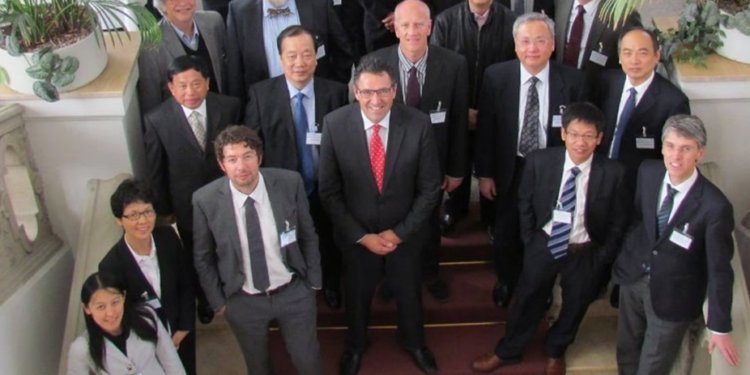So, who exactly is Wei Cai, the scientific staff member of Germany’s public health authority, the Robert Koch Institute (RKI), who, as revealed in hitherto hidden minutes of the institute’s “COVID-19 Crisis Group”, comes from none other than Wuhan? And when I say “hitherto hidden minutes”, I mean hidden precisely in the ostensible leak of the unredacted “RKI Files”. For, as I discussed in a recent article, the file in question was not included among the supposedly “complete minutes” assembled by Aya Velazquez, the prostitute-turned-journalist and anti-Covid-measure activist who unveiled the documents at a highly-publicised press conference in Berlin on July 23rd.
As discussed in a postscript to that article, although I have asked her, I have not received a coherent answer from Velazquez as to how she could have overlooked these minutes, which are indeed the minutes of the very first RKI “crisis group” meeting of which we have a public record.
Be that as it may, the reason why the revelation of the RKI’s link to Wuhan is important – and why German authorities may have preferred that it remain secret – is because, as I have documented in, among other places, my ‘The Greatest Story Never Told‘, Germany in fact had a very active publicly-funded research partnership in virology with several research institutions in Wuhan, including the Wuhan Institute of Virology (WIV).
Indeed, the German-Chinese virology network, known as the “Sino-German Transregional Collaborative Research Centre” or TRR60, gave rise to a full-fledged German-Chinese virology lab, not only right in Wuhan but indeed right in what is regarded as the area of the initial outbreak of COVID-19 in the city. For this and other (microbiological) reasons outlined in my ‘The Smoking Gun in Wuhan‘, the members of the German-Chinese virology partnership ought to be prime suspects in any genuine investigation into a possible laboratory origin of SARS-CoV-2. But, instead, they have been completely ignored in favour of suspects in far off places like Chapel Hill, North Carolina.
The below photo shows various members of the partnership, as well as associated German and Chinese luminaries in the field of virology. It was taken in 2015 at a “Sino-German Symposium on Infectious Diseases” in Berlin organised by the German Co-Director of TRR60, Ulf Dittmer. Dittmer is the bald man in the middle of the picture. None other than Christian Drosten, the German designer of the ‘gold standard’ SARS-CoV-2 PCR test, and Shi Zhengli, the WIV’s renowned bat coronavirus expert, can be seen together in the lower left-hand corner of the picture.

Other notables include Chen Xinwen, the then Director of the WIV. Chen is the small, somewhat buck-toothed man in the lower right-hand corner. He was a member of TRR60. The young woman with the long-hair next to Shi Zhengli appears to be the current Director of the WIV, Wang Yanyi. The former President of the Robert Koch Institute, Reinhard Burger, is also in the picture. He is the white-haired man with the blue shirt near the centre of the group.
Given the WIV’s famed practice of gain-of-function research, it is worth noting that this get-together took place precisely during the American moratorium on such research. It is also worth noting that Christian Drosten himself, as touched upon in my ‘The Greatest Story‘, has coordinated a German research project on the MERS coronavirus involving gain-of-function experiments. Indeed, that ‘RAPID’ project got underway just two years after the Berlin get-together and likewise while the American moratorium still remained in place.
So, did Wei Cai have anything to do with the German-Chinese virology network? Well, yes, from her publications, we know that she did. Thus, she is a co-author with Michael Roggendorf of this 2013 paper on PCR detection of Hepatitis and HIV infections. Roggendorf is none other than the founder of the German-Chinese partnership. He is the white-haired man with the red bowtie next to RKI president Burger in the above photo. The former Chair of the Department of Virology at Essen University Hospital, he would cede his position as German Co-Director of TRR60 to his colleague Dittmer in 2013. Essen University Hospital is the lead German institution in the German-Chinese virology partnership.
Roggendorf can be seen below receiving the “Chime Bell” award from the Governor of Hubei Province in 2016 in honor of his contributions to the German-Chinese partnership. Wuhan is the capital of Hubei Province.

In early 2020, Wei Cai would then appear as co-author with Christian Drosten on a paper about the famous first cluster of COVID-19 cases in Germany. As discussed in my series of articles here, here and here, it was precisely this cluster that first raised the spectre of ‘asymptomatic spread’ of COVID-19, even though – contrary to what was claimed by Drosten and other German authors in a letter to the New England Journal of Medicine – Patient Zero was not in fact asymptomatic and none of the members of the cluster appear to have been particularly ill.
As touched upon in my previous article, Wei Cai would then go on to complete a PhD in Medicine at Drosten’s Charité University Hospital in Berlin, although under the direction of her supervisor in the Infectious Diseases Unit of the RKI, Walter Haas. Per her Linked-In page (hat-tip: FrauHodl), she completed a first degree in medicine at the Hubei University of Chinese Medicine in Wuhan in 2000 before going to Germany to do a master’s in public health in Bremen.
It should be noted that Wei Cai is an epidemiologist not a virologist. Hence, she would not have been involved in the sort of laboratory experimentation on viruses that was being conducted under the aegis of TRR60 in Wuhan.
Nonetheless, the questions remain. Why was the very existence of the RKI’s staff member from Wuhan redacted in the original official release of the “RKI Files”? Why were the minutes in question, now unredacted and revealing her existence, hidden in the ostensible leak, as if the leakers were somehow sensitive to the Government’s concerns? And why, finally, do German – unlike American – links to Wuhan appear to be off-limits for German media, both traditional and new? Why the omertà?
Robert Kogon is the pen name of a widely-published journalist covering European affairs. Subscribe to his Substack.













To join in with the discussion please make a donation to The Daily Sceptic.
Profanity and abuse will be removed and may lead to a permanent ban.
Especially so given the recently released minutes of the Robert Koch Institut the gist of which is that every dubious measure was known to be very dubious and sometimes even counterporductive and yet the juggernaut rolled on.
You need to listen when they talk about multi-dimensional warfare. One on level it is mindblowingly sophisticated and on another level just some dirty grubby entity. A teacher of mine said that Satan is one tenth evil genius and nine tenths old lech. The problem is that genuine perception requires you to see the whole of our current reality as predatory. And how many of us would enjoy entertaining that possibility? And also knowing that it will be more predatory tomorrow than it is now. Consider that they want you to feel like a deer in the headlights.
You can add to the questions at the end “Why was Reinhardt Fuellmich snatched from Mexico, transferred to Germany and currently locked up in solitary confinement in a High Security German prison?”
https://truthsummit.substack.com/p/reiner-fuellmich-persecution-in-prison?publication_id=1565735&post_id=150065291
Considering more than 17 million have been killed with the vaccine they developed and let loose, not to mention the maiming and injury that resulted, these people should be investigated and prosecuted by the ICC. This would be real justice.